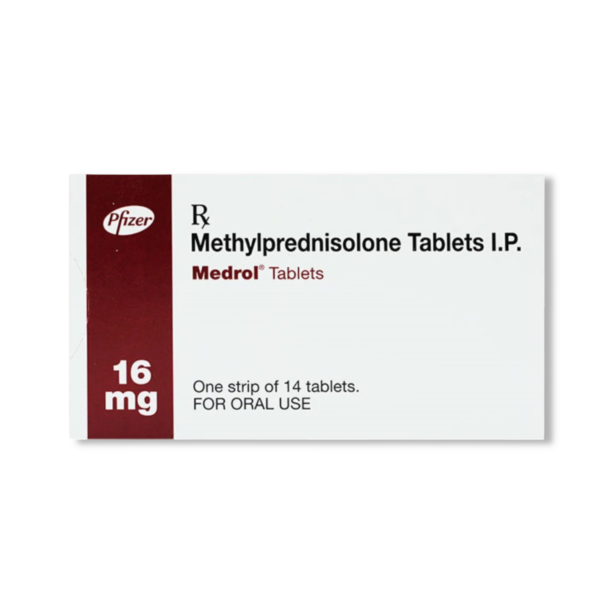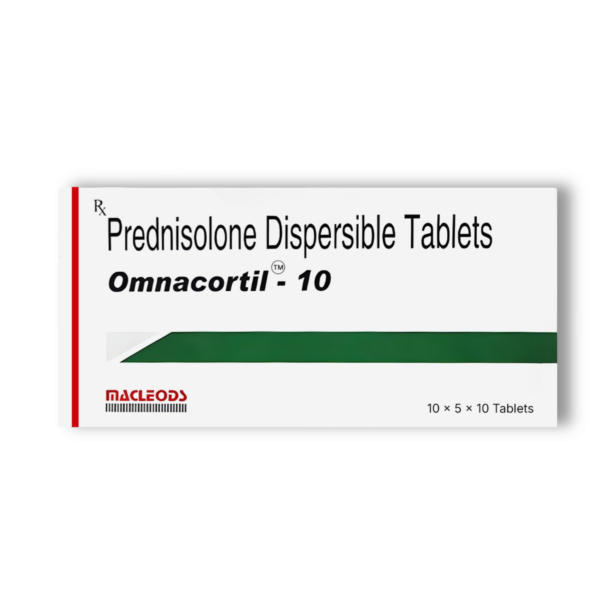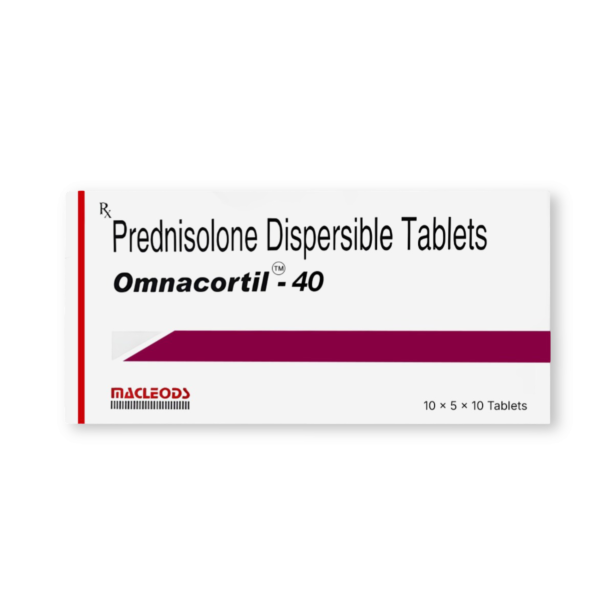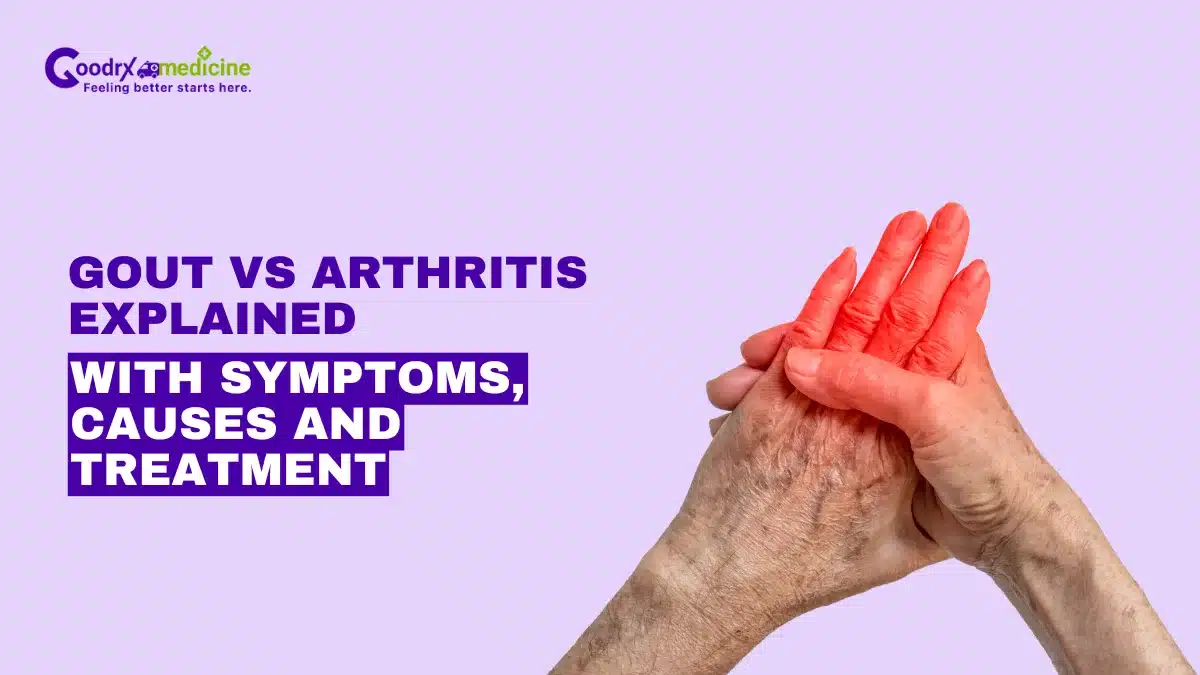Joint pain is a common complaint among millions of people around the world. It can interfere with daily tasks, limit mobility, and reduce quality of life. Two of the most well-known causes of joint pain are Gout and Arthritis.
Although these conditions share some similar symptoms like swelling, stiffness, and discomfort in the joints, they are not the same. In fact, they are quite different in terms of what causes them, how they develop, the pattern of pain they create, and how they are treated.
Gout is a type of Arthritis caused by a huge amount of uric acid in the body, leading to sudden and extremely painful attacks, usually in one joint. It often affects the big toe and can be triggered by certain foods or lifestyle habits.
On the other hand, Arthritis refers to inflammation of the joints. It includes a range of conditions like Osteoarthritis (due to joint wear and tear) and Rheumatoid Arthritis (which is an autoimmune disease).
In this article, you will get a clear Gout vs Arthritis comparison in detail to help you understand how they differ.
Quick overview of Gout vs Arthritis
Take a quick look at the differences between the two:
| Feature | Gout | Arthritis |
|---|---|---|
| Cause | Buildup of uric acid crystals | Inflammation due to wear, autoimmunity, or infection |
| Commonly affected joints | Big toe | Knees, hips, hands, spine, etc. |
| Onset of symptoms | Sudden and intense | Gradual and progressive |
| Pain characteristics | Sharp, severe, throbbing pain | Dull or aching pain |
| Triggers | Certain foods, alcohol, and stress | Age, overuse, and autoimmune issues |
| Duration of attack | A few days to a week | Chronic, long-term |
| Treatment approach | Medication to lower uric acid, and lifestyle changes | Pain relievers, physical therapy, and disease-specific treatment |
Save up to 90% on your medicine bills

Medrol 16 Mg Tablet

Omnacortil 10 Mg Tablet

Depo-Medrol 40 Mg Injection 1ml

Omnacortil 40 Mg Tablet
Cause
Gout is caused by a high uric acid in the blood. When the body produces too much uric acid or cannot eliminate it properly, crystals form in the joints. These crystals cause sudden inflammation and intense pain.
Arthritis occurs because of joint inflammation. It includes many conditions like Osteoarthritis, Rheumatoid Arthritis, and Psoriatic Arthritis. Each type has a different cause, ranging from joint wear and tear to autoimmune responses where the immune system attacks healthy joint tissue.
Commonly affected joint
Gout most often starts in the big toe. However, it can also begin in the ankles, knees, elbows, wrists, and fingers. The pain usually begins in one joint.
Arthritis affects a wide range of joints, depending on the type. Osteoarthritis often affects the knees, hips, and hands, while Rheumatoid Arthritis typically impacts smaller joints like those in the hands and feet, often on both sides of the body.
Onset of symptoms
A Gout attack can occur suddenly, often overnight. The pain starts without warning and can become unbearable in just a few hours.
Arthritis usually develops slowly over time. The symptoms worsen gradually, making it more difficult to move or use the affected joint as the condition progresses.
Pain characteristics
The pain in Gout is usually sharp, intense, and throbbing. Even the touch of a bedsheet on the toe can feel painful during a Gout attack.
In Arthritis, pain is more dull, aching, or stiff. The discomfort increases with activity or after long periods of rest, especially in the morning or after sitting for a while.
Triggers
Gout attacks are triggered by certain foods like red meat, shellfish, and alcohol, or stress, dehydration, or certain medications.
Arthritis triggers depend on the type. Osteoarthritis is linked to age and overuse, while Rheumatoid Arthritis is an autoimmune disease. Weather, Obesity, and joint injuries can also make symptoms worse.
Duration of attacks
Gout attacks are typically short-lived, lasting from a few days to a week if treated. However, without proper management, they can recur more frequently and affect more joints.
Arthritis is a long-term condition, meaning it lasts for years or even a lifetime. The symptoms might improve at times, but usually return or get worse over time.
Treatment approach
Treatment for Gout focuses on lowering uric acid levels using medications like allopurinol or febuxostat. Pain and inflammation are managed with NSAIDs, corticosteroids, or colchicine. Lifestyle changes like reducing alcohol, eating low-purine foods, and staying hydrated are also important.
Arthritis treatment depends on the type. It often involves pain management, anti-inflammatory drugs, physical therapy, and in some cases, disease-modifying medications or surgery. Staying active, using joint protection techniques and maintaining a healthy weight also help.
Conclusion
When comparing Arthritis vs Gout, they may appear similar due to their shared symptoms, but they are distinct conditions with different causes, triggers, progression patterns, and treatment strategies.
Gout is a sudden, intense form of joint pain caused by excess uric acid, whereas Arthritis is a broader term that covers long-term joint inflammation from various underlying causes.
Recognizing these differences is key to getting the right diagnosis and starting the most effective treatment early. Whether you or someone you know is dealing with joint pain, understanding the specifics of Gout vs Arthritis can help in managing the condition better and improving quality of life.
If joint discomfort is affecting your daily routine, consult a doctor for treatment and care.

Frequently Asked Questions
Can you have Gout and RA?
Yes, it is possible to have both Gout and Rheumatoid Arthritis (RA), although it’s uncommon. These are two different conditions with distinct causes. Gout results from uric acid buildup, while RA is an autoimmune disease. A doctor can help diagnose and manage both conditions effectively if they occur together.
Can diet changes alone cure Gout or Arthritis?
No, diet changes can help manage symptoms especially in Gout but they cannot cure either condition. Gout may improve with a low-purine diet, while Arthritis may benefit from anti-inflammatory foods. However, both typically require medical treatment for long-term control.
Is exercise safe if I have joint pain from Gout or Arthritis?
Yes, gentle exercise can help maintain joint flexibility and reduce stiffness. Low-impact activities like walking, swimming, or yoga are generally safe. However, during a Gout flare-up or severe Arthritis pain, rest and medical advice are recommended.
Can stress worsen Gout or Arthritis symptoms?
Yes, high stress levels can trigger inflammation in the body, which may worsen Arthritis pain or even trigger Gout attacks. Managing stress through relaxation techniques, sleep, and healthy routines is beneficial for joint health.
When referencing outside resources, GoodrxMedicine always provides full citations. To learn more about the measures we use to maintain the quality of our content, please review our Content Information Policy.











